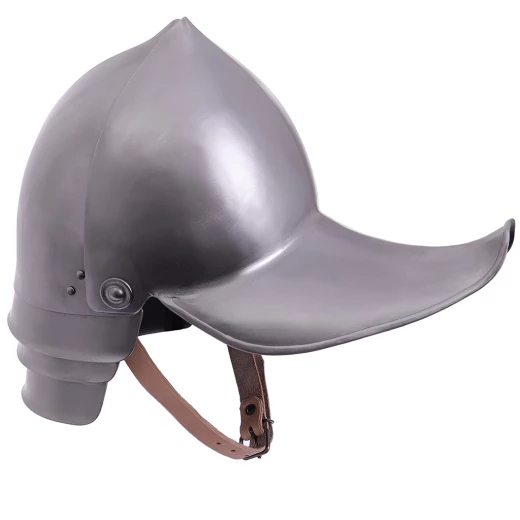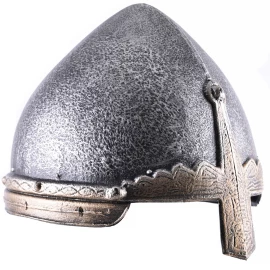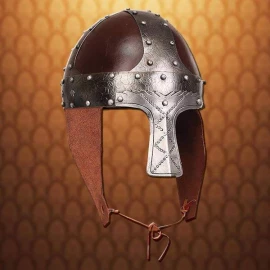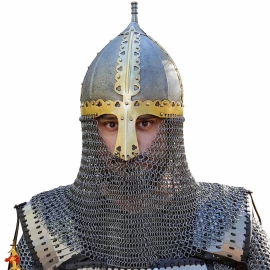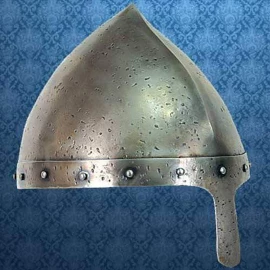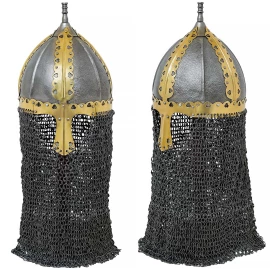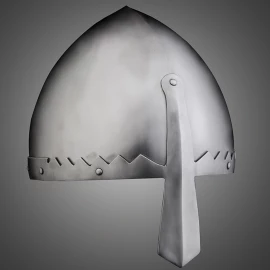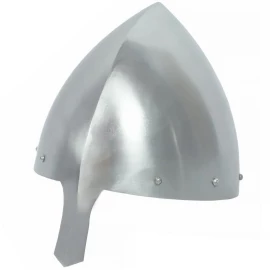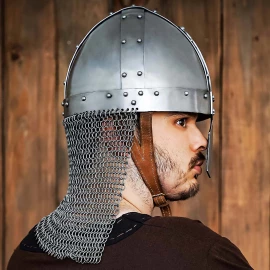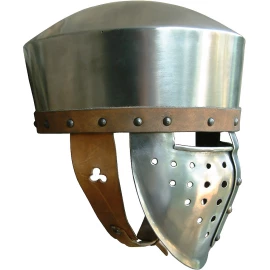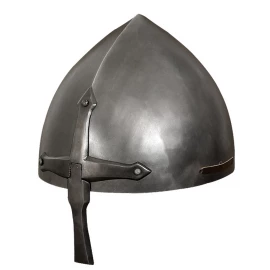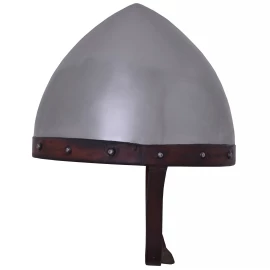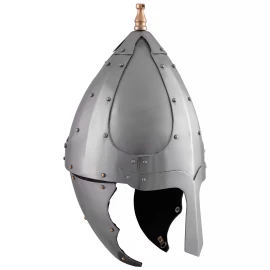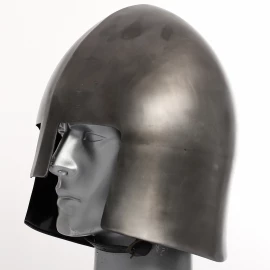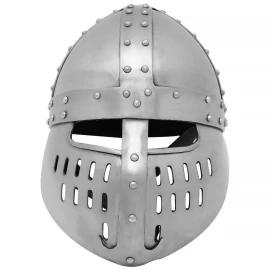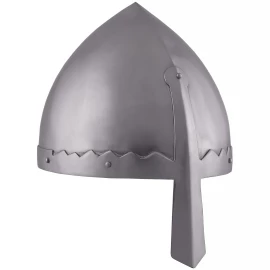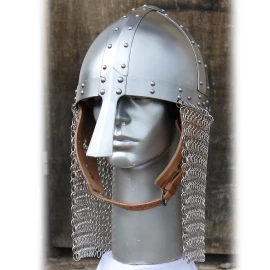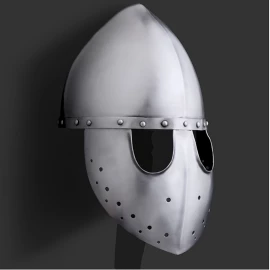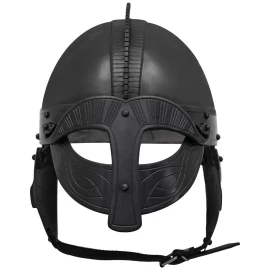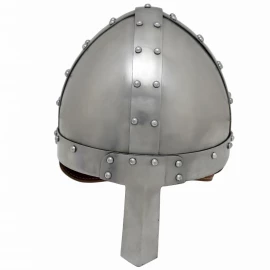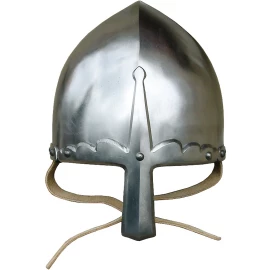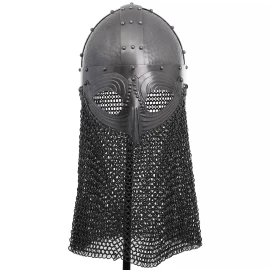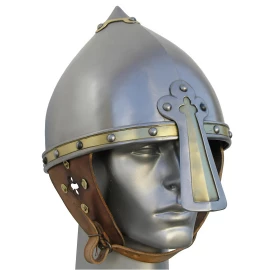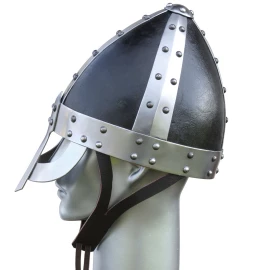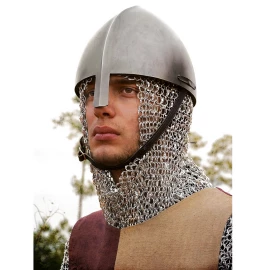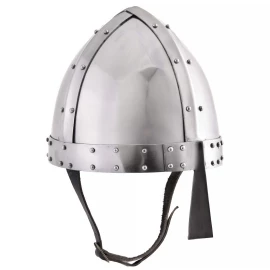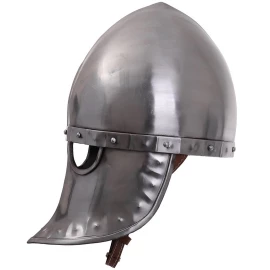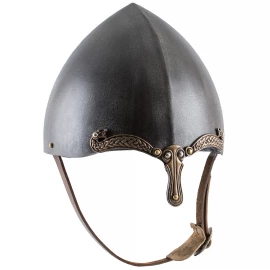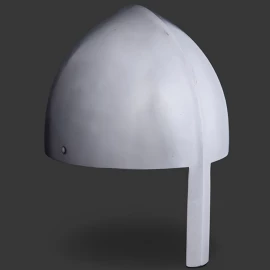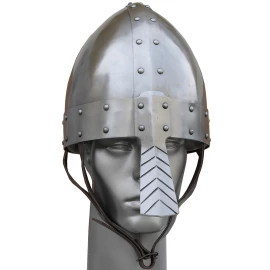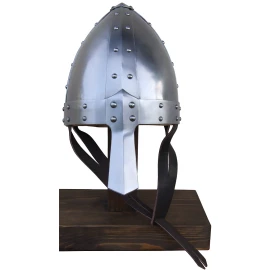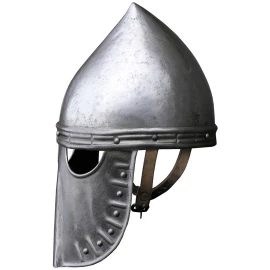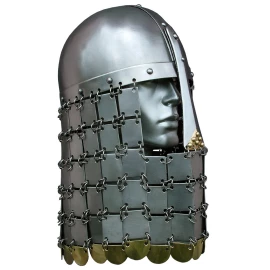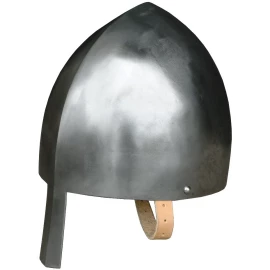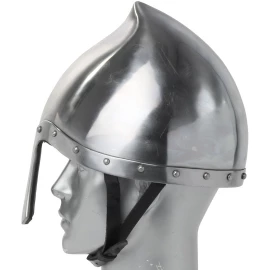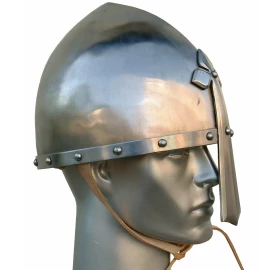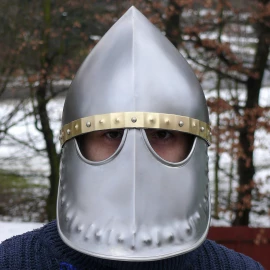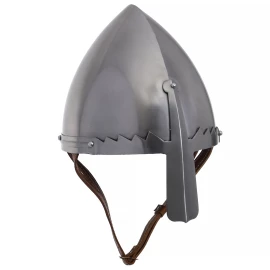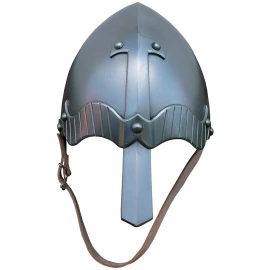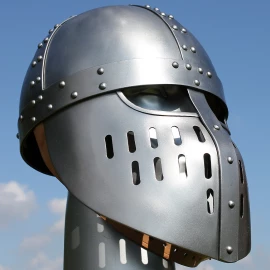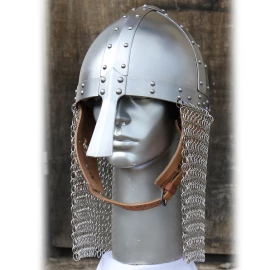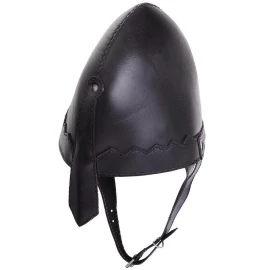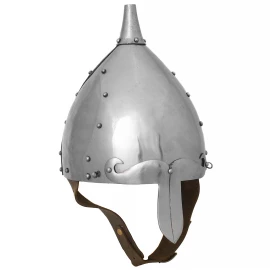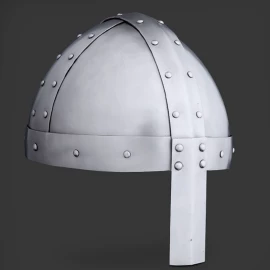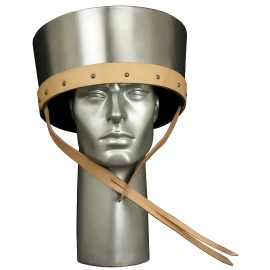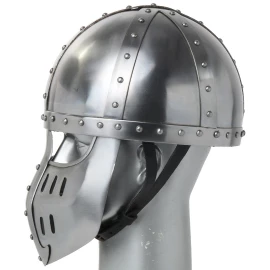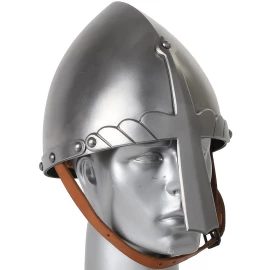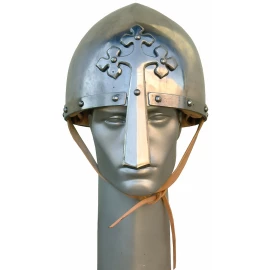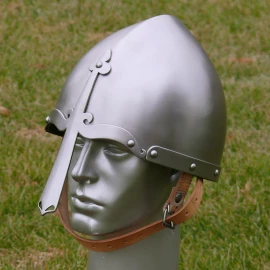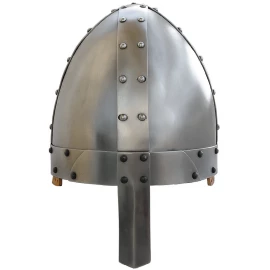Irish Gallowglass warrior Helmet
1xThe gallowglasses were a class of elite mercenary warriors who were principally members of the Norse-Gaelic clans of Scotland between the mid 13th century and late 16th century. As Scots, they were Gaels and shared a common background and language with the Irish, but as they were descendants of 10th century Norse settlers who had intermarried with the local population in western Scotland, the Irish called them Gall Gaeil ("foreign Gaels"). More information...
Irish Gallowglass warrior Helmet
- Made from 1,5 thick mild steel
- Incl. textile liner and chin strap with iron buckle
- Please select the requested size and finish
Please read our instructions, how to determine a helmet size correctly.
The Gallowglass or ‘Galloglaigh’ is an Irish equivalent of the Samurai warrior. Their existence is an almost forgotten piece of Ireland’s history. Yet, in medieval Ireland, galloglaigh were indispensable. Every Norman war lord or Gaelic chieftain made sure to have his own well-trained, private galloglaigh army.
The galloglaigh were a group of highly-skilled mercenaries who settled all over Ireland after travelling from Scotland. They were Gaels’ like the native Irish and shared a common language and similar culture.
They were the potent result of the inter-breeding of Scottish Gaels with the Norse settlers who colonised the Scottish isles.
Galloglaigh Weaponry
In addition to their double-sided axes, they also liked to use massive double- handed swords, about five feet in length. These long swords were known as ‘Claymore’, derived from the Gaelic word ‘Claiomh Mor, which means ‘big sword’. The gallowglasses did not believe in doing anything in half measures!
Their weaponry also included small bows, long spears and lethal throwing darts for close quarter fighting targeting their enemies’ unprotected eyes, arteries or other vulnerable areas. They were ruthlessly efficient with them all. They also wore long chain-mail shirts and sometimes plate armour over quilted garments. They had their own distinctive dress code, sometimes having plate armour on just one of their arms. A gallowglass was usually accompanied into battle by two young assistants, one to carry his various weapons and the other to carry his food.
We are here for you


